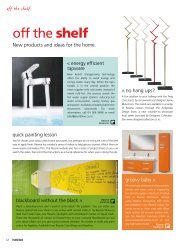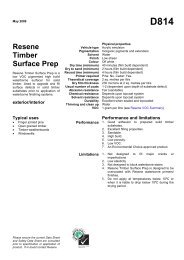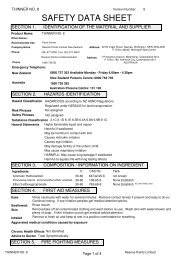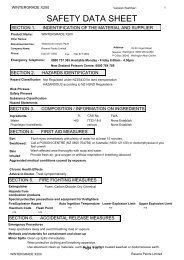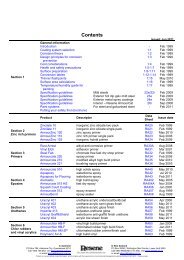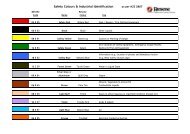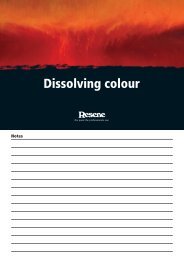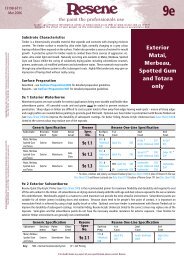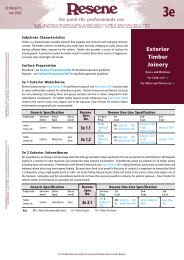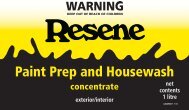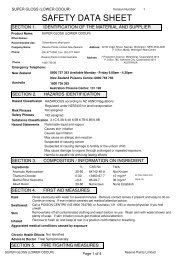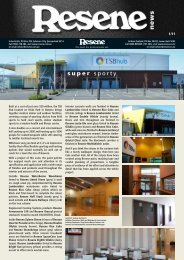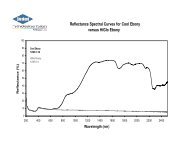Putting your safety first - Resene
Putting your safety first - Resene
Putting your safety first - Resene
- No tags were found...
Create successful ePaper yourself
Turn your PDF publications into a flip-book with our unique Google optimized e-Paper software.
Polyurethanes and lacquersPolyurethane paints and lacquers fall into the following three categories:1. Urethane oils and urethanealkyds (e.g. polyurethanevarnishes)Urethane oils and alkyds contain no residueof free unreacted isocyanate, so the handlingand use of these products is no different tonormal solventborne paints.2. Blocked isocyanates (e.g.some soldering fluxes)Blocked isocyanate coatings also contain noresidue of free unreacted isocyanate, so theapplication of these materials poses noproblems from that viewpoint. However,phenolic solvents may be present in theformulated paint and additional phenolicmaterial may be released during heat curingprocesses. In these circumstances appropriateprecautions for phenols must be taken. Thesemust include protection (adequate ventilationand/or respiratory protection againstinhalation of phenolic-containing vapours andsuitable protective clothing to prevent skincontact).3. Polyisocyanates (e.g. onepackmoisture-cured andtwo-pack isocyanatecontaining paints)The great majority of industrial-usedpolyurethane coatings containpolyisocyanates. This section is concernedwith precautions to be observed in thehandling and application of these materials.The two most important isocyanates aretoluene diisocyanate (TDI) and 4.4.1diphenylmethane diisocyanate (MDI).Mixing• The mixing of these paints should be in wellventilated areas with the appropriaterespiratory protection worn.Application by brush or roller• Where MDI class materials are applied bybrush or roller, there is unlikely to be a problemfrom exposure to free isocyanates unlessventilation in the area is inadequate.• Where TDI class materials are applied by brushor roller the area shall be well ventilated andori-nasal canister respirators worn. If there isdoubt about the effectiveness of theventilation then positive pressure air-suppliedrespirators must be used.Application by spraying• If you are a spray painter, you need tounderstand the health risks involved inspraying polyurethane paints and know howto protect <strong>your</strong>self against them.• The liquid paint that comes out of a spraygun is in a fine mist called an aerosol. If youinhale this aerosol, the liquid isocyanate isabsorbed into <strong>your</strong> lungs, and this is whenhealth problems can start.• Breathing the aerosol of isocyanate-containingpaint causes irritation of the nose, throat andlungs. This can happen either immediately onexposure or, more often, later. The symptomsare a dry or sore throat, coughing, wheezing,chest tightness and/or asthma.• Eye contact causes irritation; it may also causesevere chemical conjunctivitis.• Skin contact causes a mild irritation whichcan lead to dermatitis.17



